Cat Goliaths: The 10 Largest House Cat Breeds
When your lap-cat weighs 20 pounds and still insists on being held, what you should know about large cat breeds.
When your lap-cat weighs 20 pounds and still insists on being held, what you should know about large cat breeds.
by Kelly Villa, | May 20, 2025

Jody Parks / Pexels
Some cat breeds are much larger than your average house cat. While size can vary a lot depending on breed, gender, and genetics, most domestic cats weigh between five and 12 pounds, but a few cat breeds blow right past that, with the largest domestic cat breed being the Maine Coon.
In fact, the cat who holds the Guinness World Record for being the longest (living) domestic cat is a Maine Coon: Barivel the cat measures over 47 inches (or close to four feet) long. But Maine Coons aren’t the only big cats out there. Here are some of the other biggest breeds of house cats.

Renáta Török-Bognár / Stocksy
The Maine Coon is not only known for being the biggest domestic cat breed but also for their human-like, intelligent eyes, enormous bodies, and distinctive square, strong faces. Some feel they have an otherworldly aura, but, luckily, they use their magic for good: Maine Coon cats are very friendly, playful, and affectionate. They love chatting with various vocalizations, including chirps, trills, and meows. They like kids and other pets and will keep your house mouse-free — they were once “working cats” who kept farms and ships clear of vermin.
Average height: 10 to 16 inches
Average weight: 15 to 22 pounds
Why they’re so big: Rugged, cold-climate working cat
Goliath size: The heaviest and longest recorded Maine Coons weighed in at 34 pounds and 48 inches long.
Browse for Maine Coons (and their mixes) for adoption

Klugzy Wugzy / Unsplash
Ragdoll cats are aptly named for their tendency to loll about in your lap like a limp play toy. They have a soft and silky medium-length coat that can be a variety of colors and patterns, including seal, blue, chocolate, lilac, and cream. They also have beautiful, bright blue, almond-shaped eyes. These big cats can weigh up to 20 pounds and defy the independent cat stereotype; they need a lot of attention and cuddling, so be sure you can be there for them, and they’ll be there for you.
Average height: 9 to 11 inches
Average weight: 10 to 20 pounds
Why they’re so big: Bred for laid-back, larger-bodied cats
Browse for Ragdolls (and their mixes) for adoption

Pierre Aden / Shutterstock
Several breeds are considered hybrids between standard domestic cats and larger wild cats. The Savannah, which is part African Serval and can weigh between 12 and 25 pounds, is one of them. This breeding practice is controversial for a few reasons, including that the wild part of these cats may persist and be introduced into a long line of cats with ill-prepared families. The Savannah cat is taller and leaner than average domestic cats and needs lots of space and opportunity to climb and jump; they can get mischievous if not given enough stimulation. They are affectionate with their people, wary of strangers, and unsurprisingly have very independent spirits.
Average height: 14 to 17 inches
Average weight: 12 to 25 pounds
Why they’re so big: Exotic, wild-domestic hybrid cat

Omar Ramadan / Pexels
The Ragamuffin is similar in look and temperament to the Ragdoll, with a thick coat that can be white, black, blue, cream, or red. They are very affectionate and love to cuddle, making them great companions for families with children or other pets. They are also really smart and open to being trained to do simple tricks, like fetching or sitting on command. Unlike some other large cats, Ragamuffin cats, who weigh 10 to 20 pounds, are not very active and prefer to lounge around the house.
Average height: 10 to 12 inches
Average weight: 10 to 20 pounds
Why they’re so big: Thick-coated, Ragdoll mix breed
Browse for Ragamuffins (and their mixes) for adoption

Lucas Ottone / Stocksy
Turkish Van cats are known for their distinctive white water-repellent coat, colored markings on their heads and tails, and blue or amber eyes (see even more white cat breeds). These big cats weigh up to 20 pounds and have a muscular build and broad chest. They’re very playful and active (they love to explore) and are smart and curious. Turkish Vans are generally clean cats and do not require frequent bathing, but they shed a lot and need some help with grooming to stay mat-free.
Average height: 10 to 12 inches
Average weight: 7 to 18 pounds
Why they’re so big: Rugged, naturally large cat
Browse for Turkish Vans (and their mixes) for adoption

Grusho Anna / Shutterstock
American Bobtail cats are medium to large (up to 16 pounds), stocky, and named for their most specific feature: a short, bobbed tail resulting from a natural genetic mutation. Their tails are usually one-third to one-half the length of a standard cat’s tail. They are intelligent and playful and love interacting with people and other animals. Bobtails are a very adaptable breed; they adjust to different living environments, including apartments, well.
Average height: 8 to 10 inches
Average weight: 7 to 16 pounds
Why they’re so big: Wildcat vibes, feral-descended cat

Anastasiia / AdobeStock
The Chausie cat is a hybrid between a wild Jungle cat (Felis chaus) and a domestic cat. Chausie cats are medium to large in size (they weigh up to 26 pounds), muscular, and have short, dense coats. They’re intelligent, active, and very social and are often described as “dog-like” in their behavior. They even enjoy playing fetch, going on walks on a leash, and swimming. Their wild ancestors give Chausie cats a strong hunting instinct, and they need plenty of exercise and stimulation. They can also be very vocal and may make a range of sounds, from chirping to growling, to communicate with you (so don’t take their snarls too personally).
Average height: 14 to 16 inches
Average weight: 12 to 26 pounds
Why they’re so big: Exotic, wild-domestic hybrid cat

schila / Shutterstock
The Norwegian Forest Cat is a majestic cat with a thick, fluffy, water-resistant coat, tufted ears and paws, and a thick ruff of fur around the neck. This large cat breed typically weighs between 12 and 18 pounds and is super friendly, chill, and affectionate. They are kind of like the European cousin to the Maine Coon in size, affability, and their love of mousing.
Average height: 12 to 18 inches
Average weight: 8 to 18 pounds
Why they’re so big: Rugged, cold-climate working cat
Browse for Norwegian Forest Cats (and their mixes) for adoption

Lydia Koh / Unsplash
As their name suggests, the Siberian cat hails from Russia and has a thick, fluffy coat designed to protect them from that harsh climate. They have round faces and expressive eyes that can be green, gold, or copper. Their water-resistant coats have three layers, which help keep them cool in the summer. That said, they prefer a colder climate for optimal comfort. Despite their large size — they weigh up to 16 pounds — Siberian cats are very agile and love to climb and explore. They are still best as indoor cats unless you are on a mission to decimate the local songbird population. They also require regular grooming to keep their signature fur in good condition.
Average height: 11 to 14 inches
Average weight: 10 to 20 pounds
Why they’re so big: Rugged, cold-climate working cat
Browse for Siberians (and their mixes) for adoption

pyrozenko13 / AdobeStock
The Bengal is a cross between a wild Asian leopard cat and a domestic cat. Developed in the United States in the 1970s, these cats typically weigh up to 15 pounds, have short, dense coats, and green or gold eyes with a distinctive “wild” look. They are known for their energetic and playful personalities, as well as being intelligent, curious, and very vocal. They will chat with their pet parents and are very social and affectionate. Bengal cats need plenty of toys, scratching posts, playtime to keep them from becoming bored or destructive, and regular grooming. They’re not low-maintenance, but they can be rewarding companions.
Average height: 13 to 16 inches
Average weight: 6 to 15 pounds
Why they’re so big: Exotic, wild-domestic hybrid cat
Browse for Bengals (and their mixes) for adoption
The two biggest cat registries recognize almost 60 different domestic cat breeds. But here’s the thing: despite all those breeds, the genetic differences that separate them are surprisingly small. Most of what changes between cats comes down to coat color, fur length, and size — all controlled by just a handful of genes.
And unlike dogs, who show a huge variety in size, shape, and personality, house cats are pretty similar across the board. But some breeds, such as Maine Coons and Ragdolls, break the mold with their size. In doing so, these big kitties tend to grow for way longer than your average cat, sometimes up to three or four years before reaching their full adult size, instead of just one. That slow growth gives them time to build massive frames and really stand out in the size department.
Cats are by far the most popular pet on earth — over a third of American households have at least one cat, and there are more than 600 million cats living with people worldwide. Yet, last year alone, nearly 3 million cats ended up in animal shelters. If you’re considering adopting a pet, start your search on Adopt a Pet.
The largest domestic cat breed is the Maine Coon. Male Maine Coons weigh, on average, 15 to 18 pounds, but some weigh as much as 25 pounds or more.
The average cat weighs between eight and 10 pounds, but males are typically bigger than females.
The average cat weighs up to 10 pounds. Cats who weigh over 12 pounds are considered large. Most large breed cats typically weigh between 12 and 18 pounds.
Driscoll, Carlos A., et al. “The Evolution of House Cats.” Scientific American, vol. 300, no. 6, June 2009, pp. 68–75, www.scientificamerican.com/article/the-taming-of-the-cat/, https://doi.org/10.1038/scientificamerican0609-68.
Michael J. Montague, PhD. “Tufts’ Canine and Feline Breeding and Genetics Conference, 2015.” VIN.com, 3 Sept. 2015, www.vin.com/apputil/content/defaultadv1.aspx?id=6976361&pid=12513&print=1.
Cats.com, and Dr Gemma Cliffin BSC BVSC MRCVS. “Are Domestic Cats Related to Big Cats?” Cats.com, 28 July 2023, cats.com/are-domestic-cats-related-to-big-cats.
“2024 Statistics - Shelter Animals Count.” Shelter Animals Count, 4 Mar. 2025, www.shelteranimalscount.org/explore-the-data/statistics-2024.

Kelly Villa is a freelance writer and contributor to various pet publications.
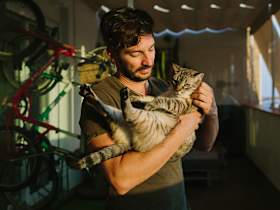
Breed Info
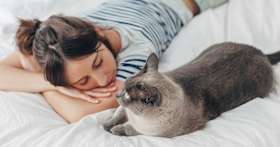
Breed Info

Breed Info

Breed Info
With over 95 percent of cats in this group, it isn’t even a competition.

Breed Info
These devoted cats are basically love wrapped in fur.
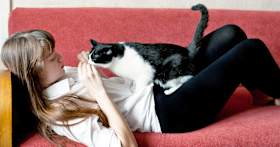

Breed Info
Thinking of adopting a cat but wondering if they’ll get along with your pup? Find out which cat breeds are more dog-friendly — and dog-like.
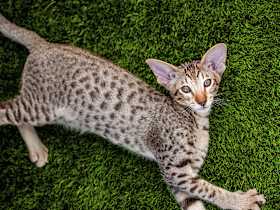
Breed Info
They may look like tiny leopards, but these spotted breeds are all about home life.
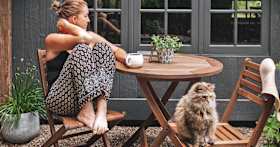
Adoption Advice
Don’t want your adoption application to get rejected? Learn how to increase the chances of an approval.

Adoption Advice
Looking for a reputable cat shelter? Learn more about how you can find a cat shelter that meets your expectations.
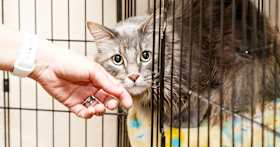
Shelters & Rescue
Not every cat will be a match for you (and vice versa). Here’s how to find “the one.”